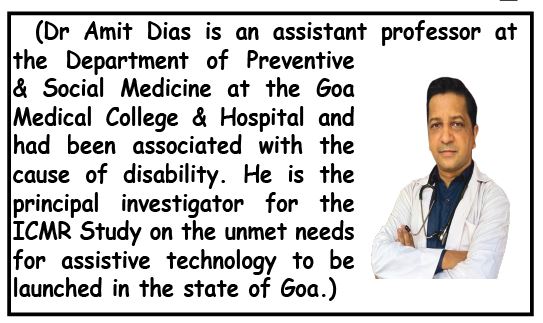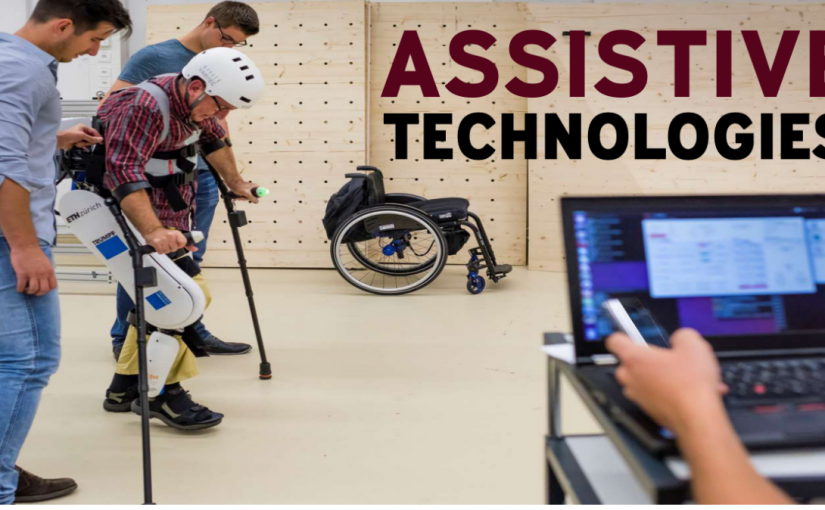An Independence Day Special!
Q/A interview with Dr Amit Dias
ICMR is to launch a new study on the un-met needs for assistive technology in the state of Goa On Independence Day this year let us take a new look at what can help us remain independent in life — Assistive Technology. “This is an emerging field in the context of health care, yet many do not have access to it and are still unaware of its ability to improve the quality of life,” says Dr Amit Dias. “We need to bridge the gap in assistive technology to improve the lives of our patients.” The ICMR is going to launch a new study on the un-met needs for assistive technology in the state of Goa in collaboration with the Goa Medical College. It will be led by Dr Dias.
Goan Observer: We do not want to become a burden on anyone! We want to be independent. On Independence Day can you tell us what can be done to ensure our independence?
Dr Amit Dias: Greetings on Independence Day. Yes, we need to value our independence both at a national level and also from our individual perspective. To be independent we need to ensure that we stay healthy, detect disease early, and take remedial measures to promote physical, mental and social wellbeing in the true sense. In case one does have a disability, this can also be helped with the help of assistive technology to improve quality of life and independence.
Q: That’s interesting, what exactly is assistive technology?
A: Assistive technology refers to the broad range of devices, equipment, and systems that enhance the functional capabilities of individuals with disabilities. These technologies are designed to help people perform tasks that they would otherwise find difficult or impossible due to physical or cognitive limitations. Assistive technology can range from simple tools like hearing aids to complex systems like powered wheelchairs or speech recognition software.
Q: That’s a comprehensive definition. Could you classify and give examples of the different sub-types of assistive devices and technology?
A: Assistive technology can be classified into several subtypes, each catering to different needs:
Mobility Aids: Devices like wheelchairs, prosthetics, and walking frames that help individuals move around more easily.
Sensory Aids: Tools such as hearing aids, cochlear implants, and Braille readers that assist individuals with sensory impairments.
Cognitive Aids: Devices like memory aids, timers, and specialized software that support individuals with cognitive challenges.
Communication Aids: Technology such as speech-generating devices and communication boards that help individuals with speech or language difficulties.
Daily Living Aids: Tools like adapted utensils, grab bars, and dressing aids that assist with everyday tasks.
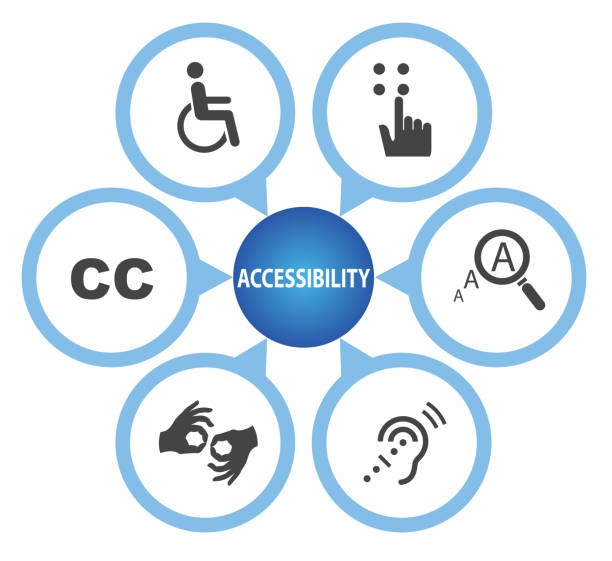
Q: Why is assistive technology needed? Can you provide some details of your latest ICMR study?
A: Assistive technology is vital because it empowers individuals with disabilities to lead more independent and fulfilling lives. The WHO recognizes the importance of assistive technology as a key enabler for people with disabilities, the elderly, and those with chronic health conditions.
According to the WHO, one in three individuals in the world, needs one or more assistive products, and this number is expected to rise as populations age and the prevalence of chronic diseases increases. Access to assistive technology is varied across the regions and we know that it is quite low in the low and middle income countries.
In collaboration with the ICMR, we are conducting a study to know the exact situation of the problem and understand the gaps that need to be bridged. The government of Goa has always taken proactive steps in providing assistance to those with disabilities and we will be able to document the impact of the Goa model of care to promote independence and functional ability.
Globally, it is estimated that only 1 in 10 people who need assistive technology actually have access to it. In India, the situation is even more challenging. According to a report by the WHO, nearly 90% of people who need assistive products in low-and middle-income countries, including India, do not have access to them. This gap is significant and highlights the urgent need for increased availability and affordability of these technologies. The new ICMR study will help us bridge the gap.
Q: Can you give examples on how assistive technology can decrease dependency in individuals and improve independence?
A: Assistive technology plays a critical role in reducing dependency by enabling individuals to perform tasks they might otherwise rely on others to complete. By providing the necessary tools, assistive technology empowers people to manage their daily activities independently, thus enhancing their sense of autonomy and self-reliance.
For example:
A person with visual impairment: With the use of screen readers and voice-activated devices, individuals with visual impairments can independently use computers and smartphones, access information online, and navigate their environment without needing constant assistance. Using a simple magnifying glass is also assistive device that can help a person with visual impairment read.
An elderly person with mobility issues: A powered wheelchair or a stair lift can enable an elderly individual to move freely within their home and community, reducing their reliance on caregivers for basic mobility and allowing them to participate in social activities more freely. The inability to climb stairs can restrict the mobility of a number of seniors restricting them to their rooms.
A child with a learning disability: Specialized educational software and adaptive learning tools can help a child with a learning disability keep up with schoolwork, reducing the need for constant one-on-one support and enabling them to learn at their own pace.
In each of these cases, assistive technology reduces the need for external assistance and fosters greater independence, ultimately improving the individual’s quality of life.
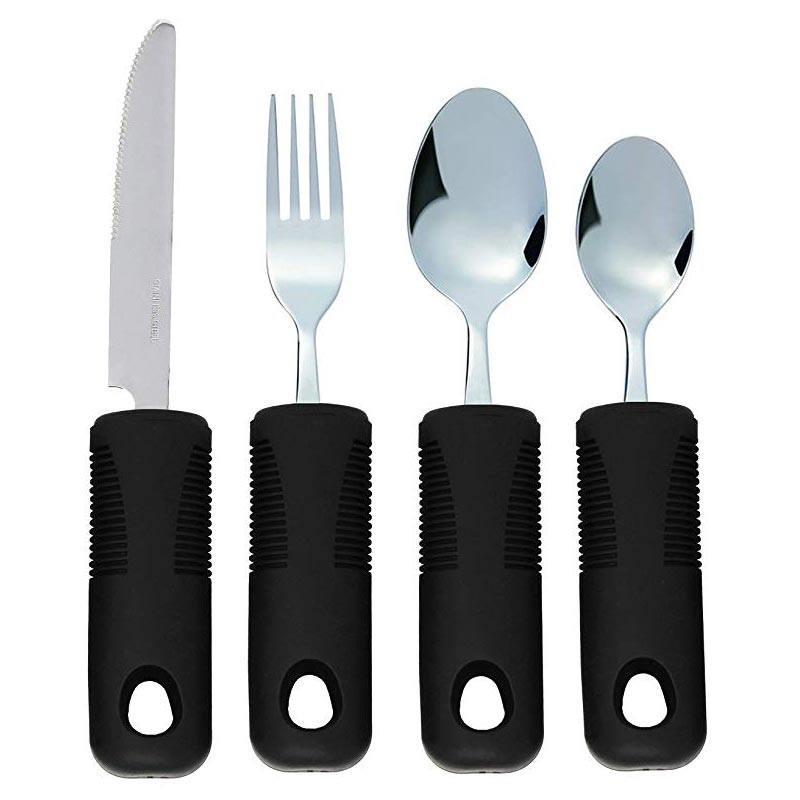
Q: What is your assessment of the unmet need so far?
A: It’s too early to speculate. Through the study we will understand how we can close the un-met need. A study published in The Lancet highlighted that the demand for assistive technology is growing rapidly, but the supply is not keeping pace. For example, the Global Disability Action Plan 2014-2021 by WHO aimed to improve access to health services and assistive technology, yet many countries are still far from achieving these goals. In India, factors such as lack of awareness, high costs, and inadequate distribution systems contribute to this gap.
Q: How can we bridge this gap in the need for assistive devices?
A: Bridging this gap requires a multifaceted approach:
Policy Implementation: Governments need to prioritize assistive technology in their healthcare policies and provide subsidies or insurance coverage for these devices.
Awareness Campaigns: Educating the public about the availability and benefits of assistive technology can encourage more people to seek and use these products.
Collaboration: Partnerships between governments, NGOs and private companies can help scale up the production and distribution of assistive devices.
Innovation: Investing in research and development to create affordable and locally-produced assistive technologies can make these products more accessible.
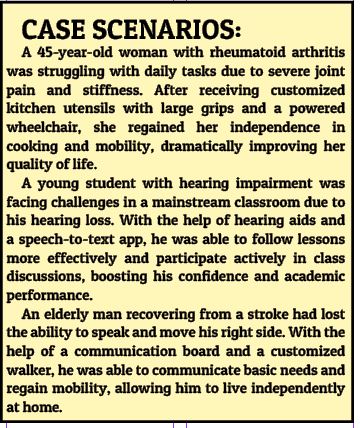
Q: Could you share your message with our readers regarding assistive technology?
A: My message is simple: Remember the word INDEPENDENT to understand the importance of assistive technology.
• I – Improves Quality of Life
• N – Nurtures Independence
• D – Develops Abilities
•E –Enhances Communication
• P – Promotes Inclusion
• E – Empowers Mobility
•N – Necessitates Accessibility
• D – Drives Innovation
• E – Elevates Mental Health
• N – Narrows the Gap
• T – Transforms Lives
Assistive technology is not just about providing tools; it’s about unlocking potential and enabling independence. It is essential that we work collectively to ensure that everyone who needs assistive technology has access to it, regardless of their socio-economic status. Let’s strive to create a world where disability is no longer a barrier to living a full and independent life. I request the people of Goa to cooperate with the team while they visit you for the survey on assistive technology.
